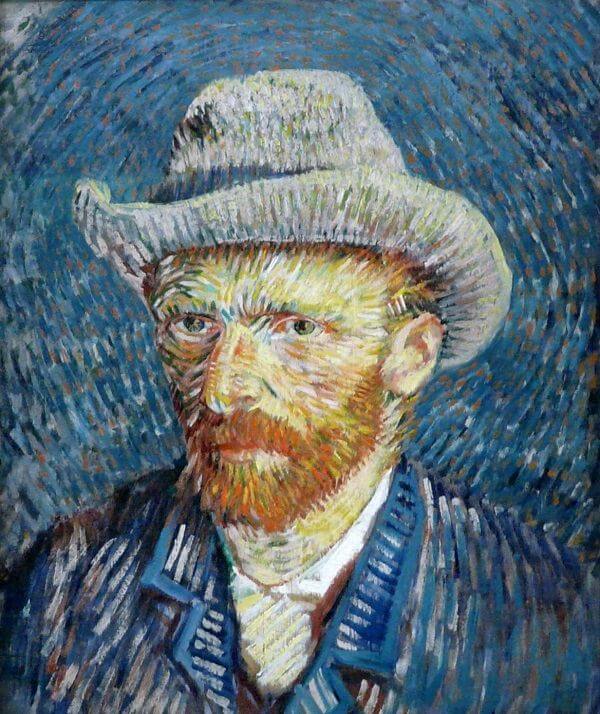Self Portrait with Grey Felt Hat, 1887 by Vincent van Gogh

Van Gogh often used himself as a model for practicing figure painting. His Paris self-portraits serve as a useful record of his painterly experiments. This one of autumn 1887 has often been discussed as evidence of the impact of Neo-Impressionism upon Van Gogh. (Artists such as Georges Seurat developed a method whereby paint was applied systematically in small adjacent dots; the technique was known as pointillism or divisionism.) But this cannot be the case. There is no systematic use of a single, unifying method of paint application in this self-portrait. The use of scattered dots of colour in the background and the overall reduction of the size of the brushmarks are symptomatic of a different strategy.
Van Gogh has employed a distinct kind of mark for each area of the canvas. These diverse and almost graphic systems of marks are related to the object or texture being represented. In the treatment of the face and head, the brushstrokes are directional, following and thus describing the planes and shapes in order to convey the structure and volume of the head or the texture and growth pattern of the facial hair. In addition the portrait informs us about Van Gogh in Paris. The image he presents by portraying himself in a smart suit and hat is of Van Gogh as a man of the city.




















